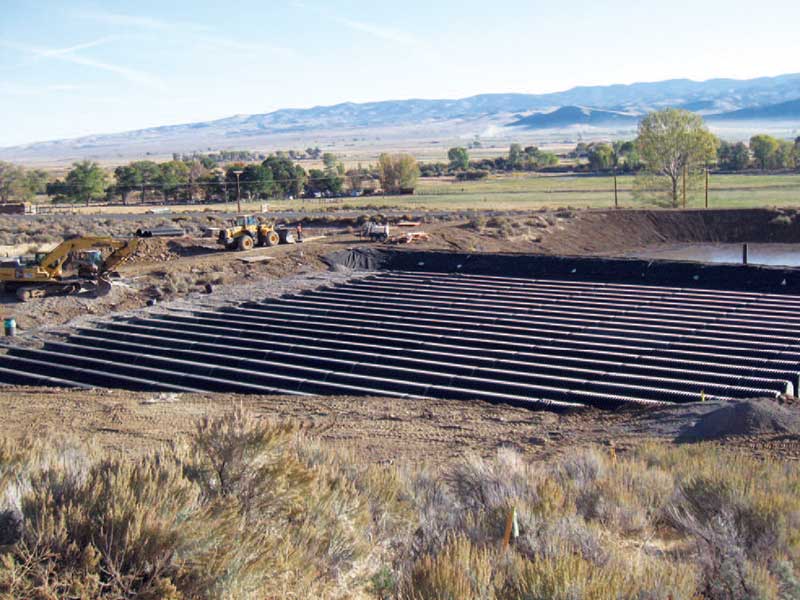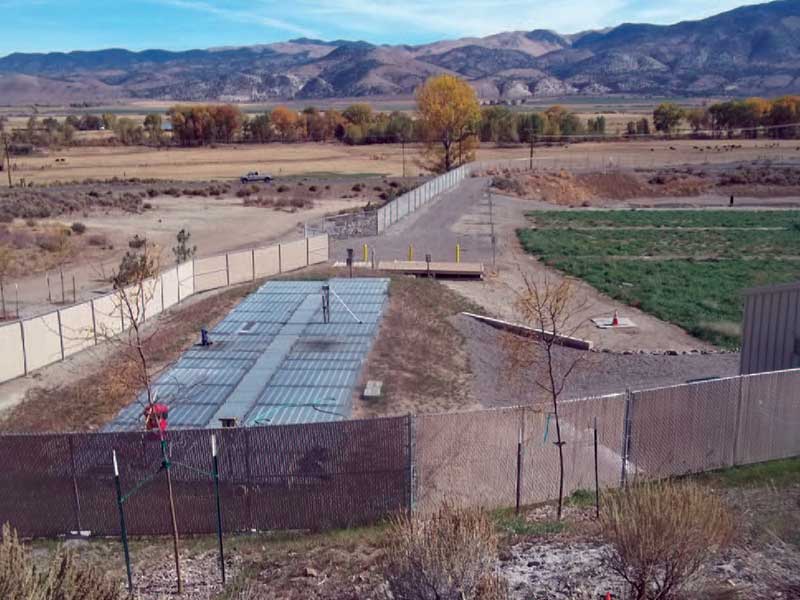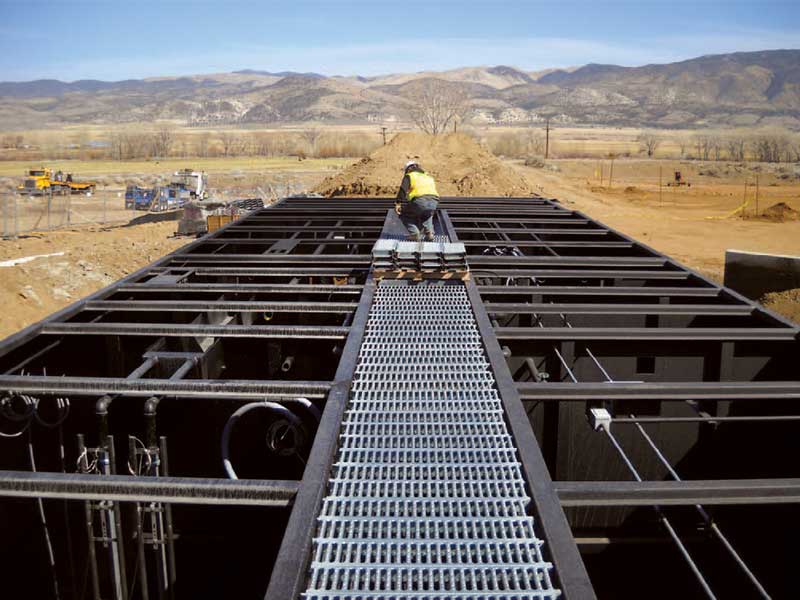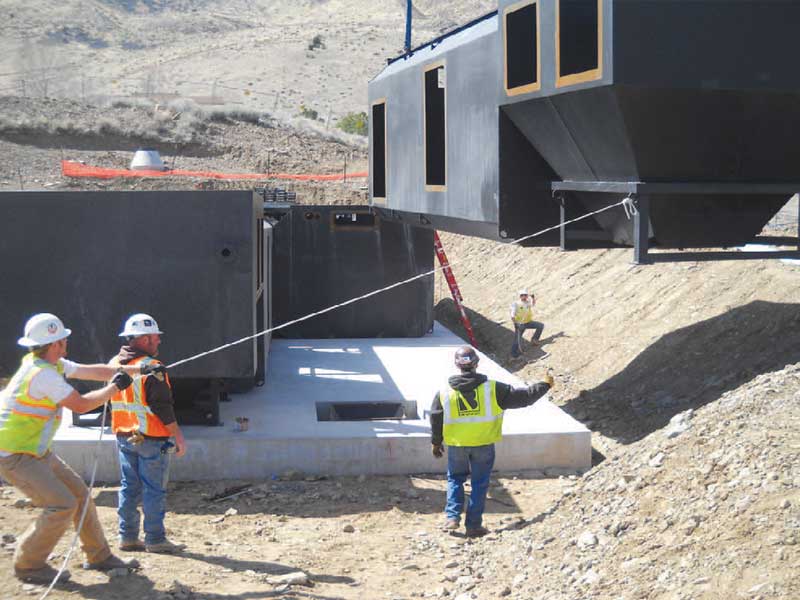
USMC Mountain Warfare Training Center - Semper Fi
SERVICE: Design-Build; Start-up / Operations
TECHNOLOGY: Textile Filter
SUSTAINABLE/WATER RE-USE: Infiltration Basin






LOCATION: Northern California
DESCRIPTION: IWS completed a wastewater treatment upgrade project at a military housing complex outside the remote USMC training base (Marine Corps Mountain Warfare Training Center – MCMWTC) in Northern California.
We worked closely with IWS on constructability and value engineering opportunities from the start of the project and IWS was very helpful. IWS was able to construct a system which met our budget, schedule, and performance requirements – it was great. We would highly recommend IWS to future clients and business partners
IWS recently completed a wastewater treatment upgrade project at a military housing complex outside the remote USMC training base (Marine Corps Mountain Warfare Training Center -MCMWTC) in Northern California. The MCMWTC is one of the Corps most remote and isolated posts occupying 46,000 acres of Toiyabe National Forest, with base camp at 6,762 feet and training areas ranging to just under 12,000 feet.IWS was selected by the construction services firm, Hunt Companies (www.huntcompanies.com) of Oceanside, CA to construct a new 50,000 gpd wastewater treatment facility servicing the military housing complex. The system was designed to provide the community with high quality effluent for reuse and dispersal. This project was part of the planned infrastructure development and expansion program to accommodate a new commissary and other site improvements.Apex Companies, LLC (Apex) completed the initial design and permitting for the wastewater treatment system – collection system, treatment, and dispersal. Apex (www.apexcos.com) serviced the project from their San Diego office. The treatment system technology was provided by Ashbrook Simon-Hartley (Ashbrook) of Houston, Texas. Ashbrook (www.as-h.com) provided the packaged mix activated sludge wastewater treatment system, controls, SCADA and PLC systems. Ashbrook’s Reno based manufacturer’s representative, TEC (www.tec-ca.com), supported IWS in the wastewater treatment plant and ancillary equipment for the project.
As part of the project, IWS provided the owner Value Engineering to bring the construction cost within the project budget. IWS reviewed Owner and GC budget and addressed costs and possible scope, equipment and material substitutions, and modifications. Items identified included: Realignment of water supply lines to limit service disruption and down time; Manhole relocation to aid in installation and support tie in locations; Evaluating water systems monitoring and control programming, which enabled better communication with the remote control and distribution equipment; Review and subsequent modifications to distribution manifolds for treated wastewater conveyance to infiltration basin and drip fields; and worked with the project team to evaluate and then help select equipment for the treatment system.
The project scope of work was divided into two phases: 1) Wet Utilities/Site Work and 2) Wastewater Treatment System and Dispersal. The first phase of work executed by IWS included: installation of 500 ft of water line; tie into an existing manhole and install two additional manholes and conveyance piping to the treatment plant; installing two storm drain culverts under a road crossing; installing HDPE storm drain pipes to convey storm runoff to a new detention pond; site grading; road base construction; and site restoration. The second phase of work was focused on the Wastewater Treatment System and effluent dispersal which included installing: the 4,000 gallon filter tank and 8,000 gallon clearwell (provided by Jensen Precast – www.jensenprecast.com); a stainless steel bar screen; the modular Ashbrook plant on concrete pads with a crane; field welding the metal panels of the treatment system; leak testing; control panels; associated electrical wiring and components; the instrumentation; the dispersal components (drip irrigation zones, gravity fed infiltration basin, and standard pressure dosed leach fields), and starting up the plant and meeting the performance criteria. Start-up included seeding the plant, clean water testing, and initial O&M of the system.
Work for the project started in August and ended with final start-up in June, with the IWS construction crews working through the winter weather in the Sierra Nevada Mountains at an elevation of 5,200 feet. Windy, cold, and snowy work conditions were an issue, but IWS made provisions to keep the project schedule on track and maintain a safe work environment.
Tim Fraser (Project Manager) of Hunt summed up the IWS effort, “We worked closely with IWS on constructibility and value engineering opportunities from the start of the project and IWS was very helpful. IWS was able to construct a system which met our budget, schedule, and performance requirements – it was great. We would highly recommend IWS to future clients and business partners”.
For more information, please click the ‘Contact’ tab to reach out to us.
